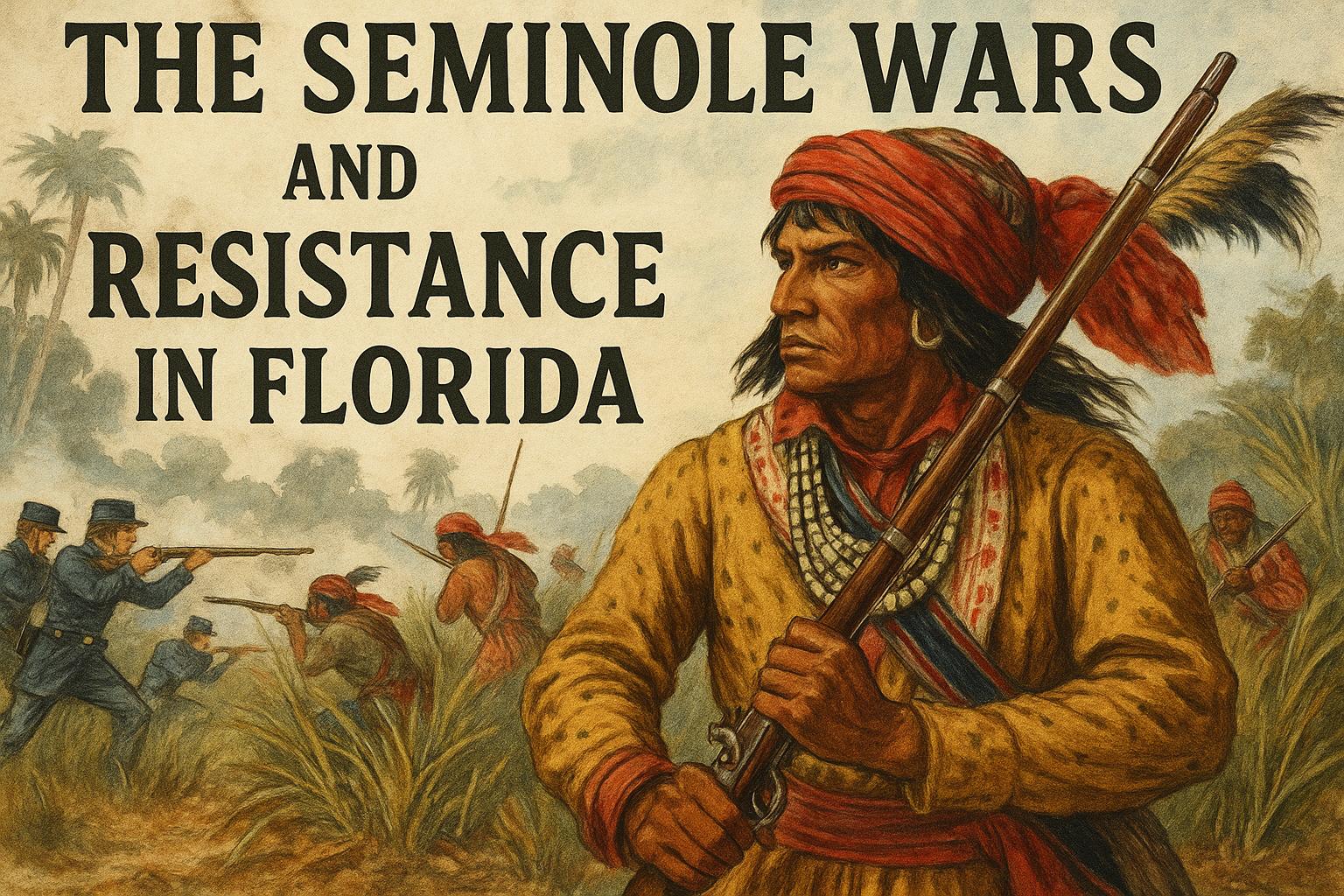The Seminole Wars: An Overview
The Seminole Wars, which consisted of a series of military conflicts that unfolded in Florida during the 19th century, epitomize a period of significant turmoil and transformation in American history. These confrontations were primarily between the Indigenous Seminole populace and the United States Army. They mark an important episode reflecting the broader United States policy intent on Native American removal to accommodate expanding settler populations.
The First Seminole War (1817-1818)
The inception of the Seminole Wars can be traced to the First Seminole War, which arose amidst escalating tensions as the United States aimed to dominate and displace Native American communities from Florida. This war was sparked by U.S. military operations carried out under the command of then-General Andrew Jackson. He led incursions into Spanish-controlled Florida with the objective of subjugating the Seminole and Creek nations. Underpinning Jackson’s campaigns were various strategic motivations, notably the intent to quell the perceived threat posed by runaway slaves who were finding asylum among the Seminole tribes.
Key Events and Outcomes
The First Seminole War culminated in the United States asserting control over specific territories. However, it did not achieve a definitive resolution to the broader conflict involving the Seminole people and the U.S. settlers pressing into their lands. This conflict highlighted and, to some extent, exaggerated underlying tensions associated with territorial expansion and the forced displacement of Native American groups. As a result, this war laid a foundational precedent that would inform and escalate future conflicts.
The Second Seminole War (1835-1842)
The Second Seminole War, occasionally referred to as the Florida War, stands as the longest and most financially debilitating of the three Seminole conflicts. The impetus for this protracted struggle was largely the enactment of the Indian Removal Act of 1830. This federal policy sought to displace Native American tribes residing east of the Mississippi River, resettling them in designated territories further west. In stark defiance led by influential figures such as Osceola, the Seminole people vehemently resisted the imposition of these removal efforts.
Resistance and Strategies
The Seminole warriors effectively employed guerrilla warfare tactics, leveraging the familiar and challenging terrain of Florida’s dense swamps to mount a formidable resistance. Such strategies proved frustrating for U.S. forces, resulting in a significant drain on military resources and personnel. Despite the eventual broader relocation of many Seminoles to the western territories, a considerable number managed to avoid capture. Those who remained continued to inhabit areas of Florida, steadfastly preserving their way of life and cultural practices.
The Third Seminole War (1855-1858)
The Third Seminole War serves as the concluding phase in this series of confrontations. This period was characterized predominantly by smaller, sporadic skirmishes, as the U.S. government endeavored to finalize the removal of the remaining Seminole presence in Florida. Even though this conflict was less intense and widespread than the earlier wars, it undeniably reinforced the Seminole people’s enduring spirit of resilience.
Aftermath and Legacy
The resolution of the Seminole Wars resulted in a drastically diminished Seminole presence in Florida. Following their eventual defeat, the majority of the Seminole people faced forcible relocation to Indian Territory, an area that today constitutes the state of Oklahoma. Nevertheless, a segment of the Seminole community evaded this fate, managing to remain within Florida and maintaining a continuity of their cultural heritage.
Modern Reflections
In contemporary times, the Seminole Wars are scrutinized as paradigms of indigenous resistance against coercive expansionist policies pursued by the United States during the 19th century. The persistence of the Seminole Tribe of Florida in the present day highlights their ability to endure and adapt amid adversity. For individuals seeking to delve deeper into these historical narratives, exploration of the Seminole Nation’s official site or academic literature by established historians offers enriching insights into the complex legacy of the Seminole Wars and the broader implications on Native American and U.S. history.

